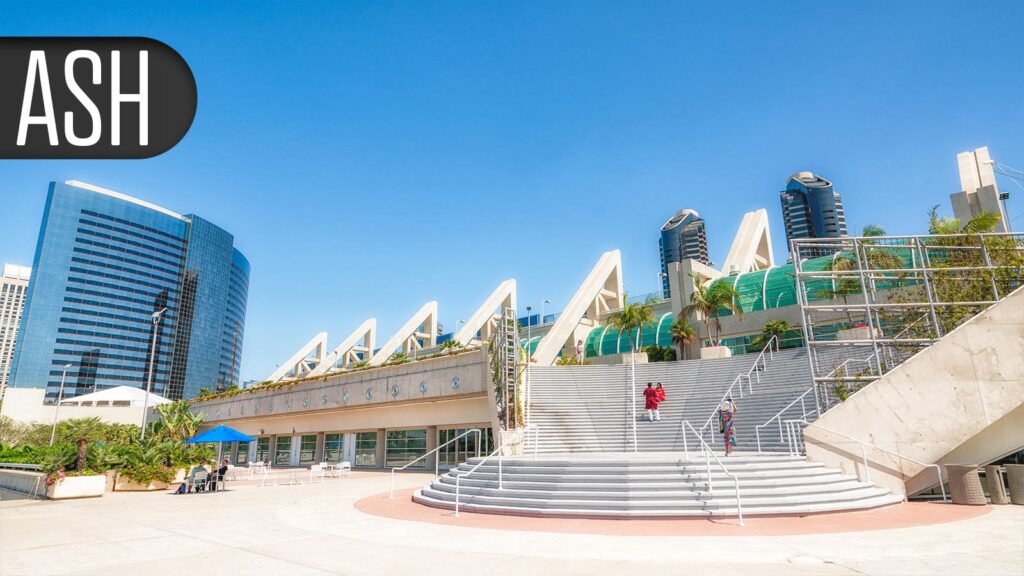SAN DIEGO — Single-agent epcoritamab (Epkinly) achieved encouraging response rates in patients with heavily-pretreated chronic lymphocytic leukemia (CLL), according to early results from a phase I trial.
The overall response rate (ORR) was 67% among 21 of 23 evaluable patients treated with the CD3 x CD20 bispecific antibody in an expansion cohort of the EPCORE CLL-1 trial. Complete responses (CRs) were seen in 43%. The median follow-up was 22.8 months, reported Alexey Danilov, MD, PhD, of City of Hope National Medical Center in Duarte, California.
“It is also important to note that the majority of patients in this study had a Tp53 aberration, which is difficult to treat CLL, and is associated with low responses to conventional therapies, including immunotherapy in particular,” Danilov said during a press briefing at the American Society of Hematology annual meeting. “In this group of patients, responses were still well preserved, with an ORR of 67% and a CR rate of 33%.”
Additionally, he pointed out that among 19 double-exposed patients — patients previously treated with both BTK and BCL-2 inhibitors — the ORR was 53%, with CRs seen in 37%.
The median time to response was 2.0 months, with a median time to CR of 5.6 months. The estimated 12-month progression-free survival (PFS) was 52% (95% CI 27-72), with a median PFS of 12.8 months (95% CI 5.4-17.1). Overall survival (OS) at 12 months was 70%, and median OS was not reached (95% CI 8.6-not reached).
Among 12 responders evaluable for minimal residual disease (MRD) by next-generation sequencing in peripheral blood, 75% had undetectable MRD at the standard 10-4 cutoff, including seven of seven with CR, and two of five with partial response.
A second group of 17 patients in an optimization cohort had a limited follow-up of a median of 2.9 months, so a response assessment in that group is still ongoing, but Danilov reported that responses have been seen in six of 10 evaluable patients.
In terms of where epcoritamab will fit into the CLL treatment landscape, press briefing panelist Jennifer R. Brown, MD, PhD, of the Dana-Farber Cancer Institute and Harvard Medical School in Boston, said “we still have plenty of patients in need of more therapy who have gone through BTK inhibitors and venetoclax [Venclexta].”
“Bispecific antibodies, I think, are particularly exciting,” added Brown. “They have been lagging behind in CLL, so it is really exciting to see epcoritamab getting more data and traction in CLL. So, I think it will potentially have a role — both in this relapsed/refractory [R/R] setting — because we see there is really good activity in this heavily pretreated population.”
“But I’m also excited about potentially moving [bispecific antibodies] to earlier lines — consolidation-type roles where patients who still have existing MRD, or even those who may not but may benefit from getting an even deeper remission — so that we may be able to move the bar on our front-line therapy with greater extension of remission with that type of approach,” she stated.
Danilov noted that there have been “seismic” shifts in the landscape of CLL “with the ousting of chemoimmunotherapy in favor of targeted agents, particularly the BCL-2 inhibitor venetoclax, and the BTK inhibitors ibrutinib [Imbruvica], acalabrutinib [Calquence], and zanubrutinib [Brukinsa].” But he cautioned that patients who progress on these agents “remain an unmet clinical agent.”
The current data are from the first 40 patients enrolled in the EPCORE CLL-1 trial — an expansion cohort of 23 patients who received epcoritamab in three gradually increasing doses, and a second group (the optimization cohort of 17), who were enrolled later. They received the drug in four increasing doses.
The median age was 72 in the expansion cohort and 68 in the optimization cohort; the majority in both groups were male.
The median number of prior lines of therapy was four in each group, with 61% in the expansion cohort and 53% in the optimization cohort getting ≥4 lines of therapy.
All 40 patients had previously received a BTK inhibitor; 83% in the expansion cohort and 88% in the optimization cohort had received prior BCL-2 therapy.
Regarding safety, nearly all (n=22/23) patients in the expansion cohort experienced cytokine release syndrome (CRS), including 16 with grade 2 CRS and 4 with grade 3 CRS. However, “simple optimized measures of an additional stepped-dose, dexamethasone, and adequate hydration” decreased the incidence of CRS in the optimization cohort, with just two cases of grade 2 CRS, and none of grade 1 CRS, Danilov reported.
Immune effector cell-associated neurotoxicity syndrome (ICANS) occurred in three patents in the expansion group, and none in the optimization group.
Epcoritamab is currently FDA approved for use in adults with pre-treated R/R diffuse large B-cell lymphoma and pre-treated R/R follicular lymphoma.
Disclosures
The study was funded by GenMab. Some co-authors are employees of GenMab or AbbVie.
Danilov disclosed relationships with BeiGene, Genentech, Nurix, Incyte, TG Therapeutics, MorphoSys, Bayer, Takeda, MEI Pharma, ADCT, Bristol Myers Squibb, Cyclacel, GenMab, AbbVie, and AstraZeneca.
Primary Source
American Society of Hematology
Source Reference: Danilov A, et al “Epcoritamab monotherapy in patients with relapsed or refractory chronic lymphocytic leukemia (CLL): Results from CLL expansion and optimization cohorts of Epcore CLL-1” ASH 2024; Abstract 883.
Please enable JavaScript to view the comments powered by Disqus.
Source link : https://www.medpagetoday.com/meetingcoverage/ashhematology/113279
Author :
Publish date : 2024-12-08 22:15:53
Copyright for syndicated content belongs to the linked Source.
